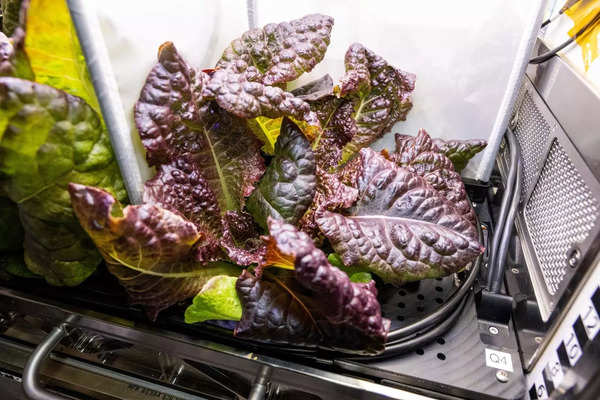
Garden watering, making microbes: What kept Nasa astronaut Sunita Williams busy in space? – The Times of India
Indian-origin Nasa astronaut, Sunita Williams, who has been stranded on the International Space Station (ISS) since June 2024, has conducted numerous experiments and dedicated more than 900 hours to scientific research.
From making a record on spacewalks to gardening in space, Sunita Williams did many things while staying in space. As Sunita Williams, Butch Wilmore, and Roscosmos cosmonaut Aleksandr Gorbunov is preparing to return to Earth, let’s look at the stuff that the astronauts did in space.
Growing space greens
The astronaut helped with some gardening in space by watering lettuce plants and studying them. The crimson-hued romaine lettuce cultivated within the Advanced Plant Habitat aboard the International Space Station forms a component of Plant Habitat-07.

Lettuce in space
This research initiative examines the influence of varying moisture conditions on microbial populations present in plants and their water systems. The findings could demonstrate how suboptimal conditions influence plant development and assist researchers in creating systems that ensure safe and nutritious food production for space crews during future missions.
Sunita Williams breaks spacewalking record
Williams and Wilmore’s spacewalk began at 7:43 am Eastern Time (ET) and concluded at 1:09 pm ET, lasting 5 hours and 26 minutes. It was the ninth spacewalk for Williams and the fifth for Wilmore.
Nasa posted on X (formerly, Twitter), “NASA astronaut Sunita WIlliams just surpassed former astronaut Peggy Whitson’s total spacewalking time of 60 hours and 21 minutes.”
According to NASA, Williams now has 62 hours and 6 minutes of total spacewalk time, fourth on NASA’s all-time list.
Packed Bed Reactor Experiment: Water Recovery Series
Packed bed reactors consist of structures filled with materials like pellets or beads, designed to enhance interaction between flowing liquids and gases. “Packed” materials inside these systems maximise fluid contact. NASA astronaut Suni Williams sets up equipment for the Packed Bed Reactor Experiment: Water Recovery Series (PBRE-WRS) study, which investigates gravitational effects on these systems aboard the International Space Station. The findings could assist researchers in developing improved reactors for water reclamation, heat management, fuel cells and various other uses.
Making microbes in space
Williams is photographed with bacterial and yeast specimens for Rhodium Biomanufacturing 03. This research is part of a continuing study investigating how microgravity influences the production processes involving engineered bacteria and yeast on the International Space Station. The absence of gravity affects how microbial cells develop, their structural formation, and their metabolic functions, which could impact biomanufacturing operations. This research aims to understand these impacts thoroughly and could enhance the utilisation of microorganisms for producing food, medicines and various other items in space, thereby reducing the expenses associated with transporting equipment and supplies from Earth.

Astraunaut Williams poses with bacteria and yeast samples for Rhodium Biomanufacturing 03
Vital Vitamins
The BioNutrients study showcases innovative techniques for generating essential nutrients during extended space travel by utilising specially engineered microorganisms, particularly yeast. When food items are stored for extensive periods, they experience a decline in their vitamin and nutritional content, and this innovative approach offers a solution to manufacture dietary supplements as required. NASA crew member Suni Williams works with custom-designed growth containers for this research project on the International Space Station.